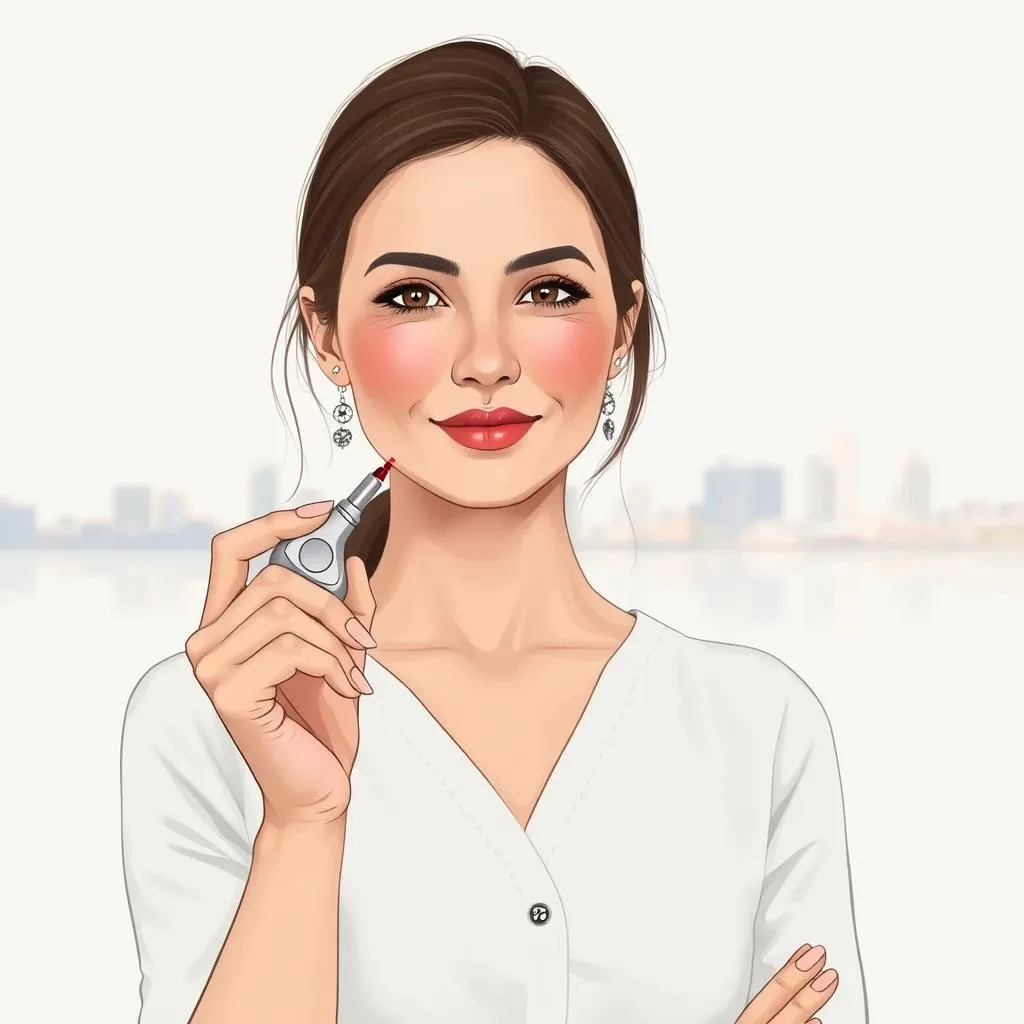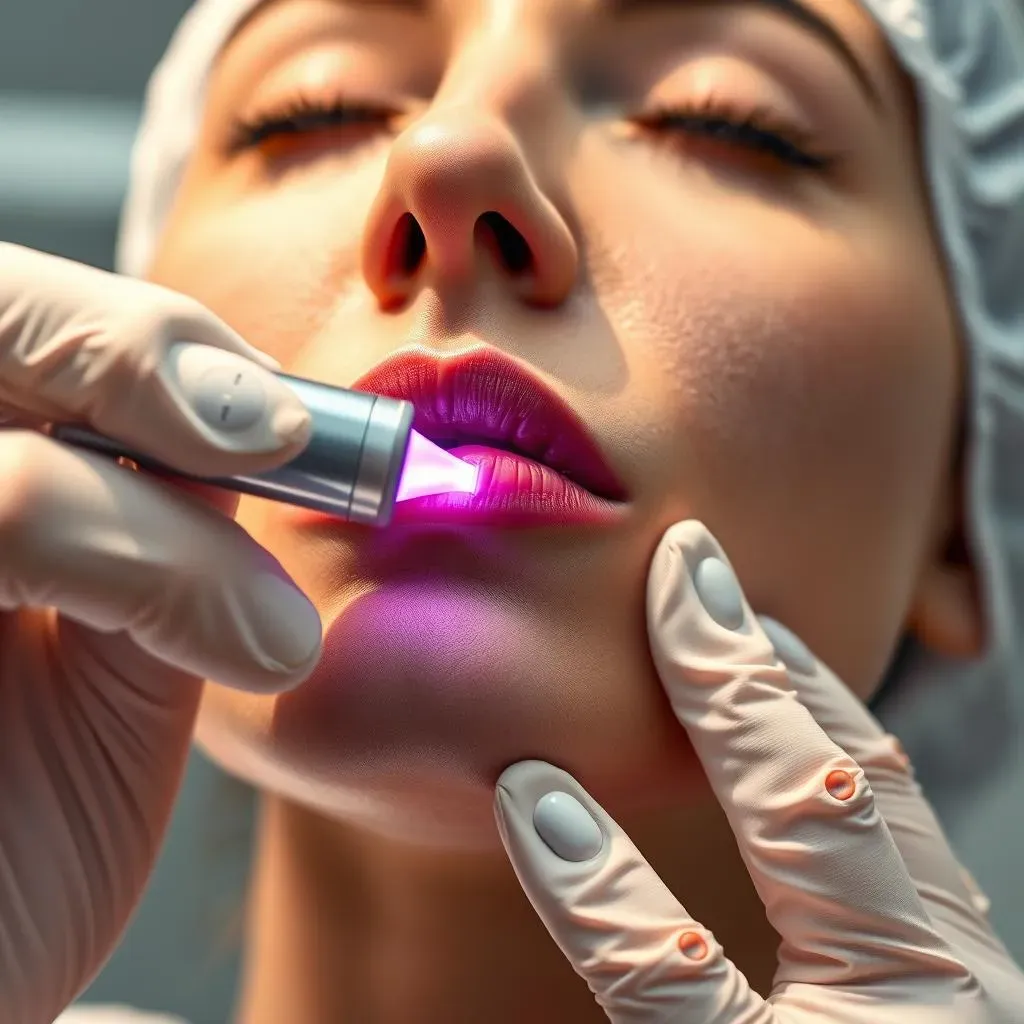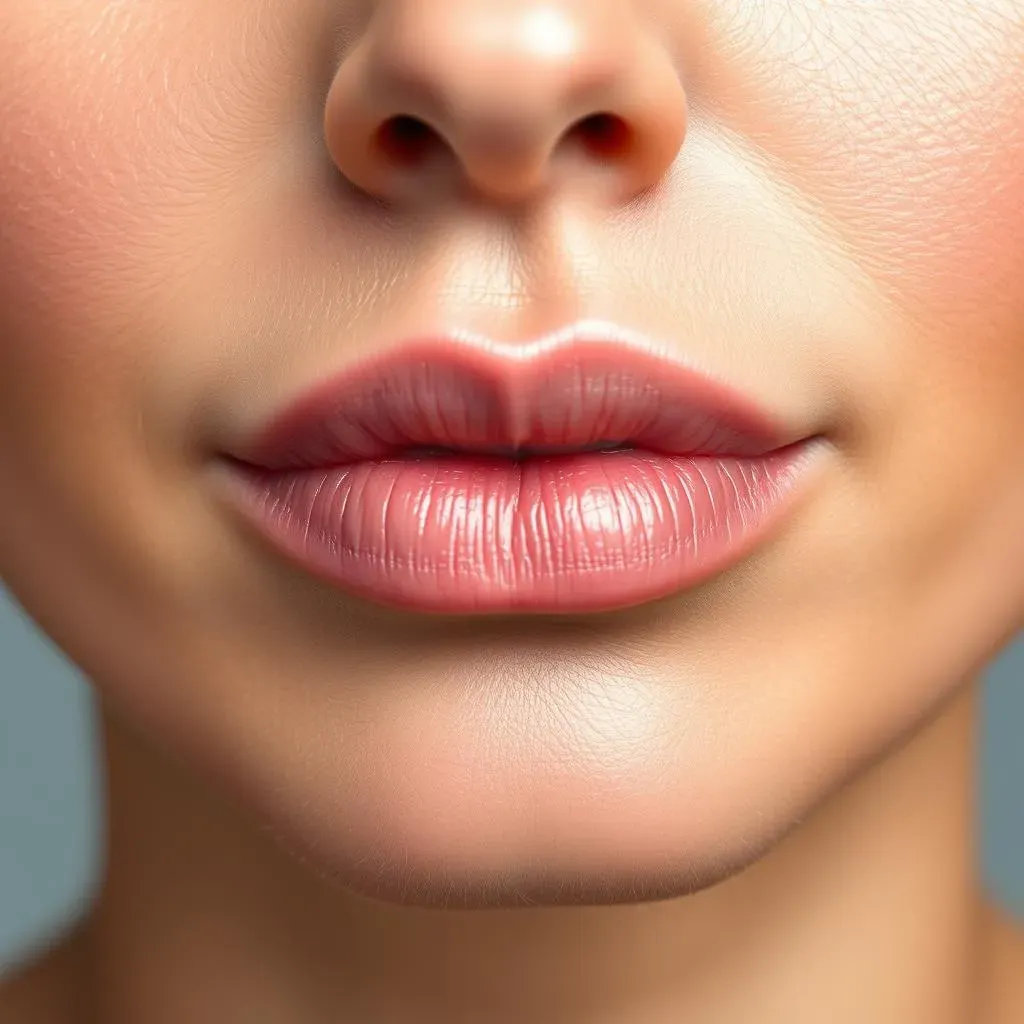Table of Contents
Are you tired of dealing with unwanted hair on your upper lip? Do you find yourself constantly waxing, tweezing, or threading to keep your lip hair-free? If so, you may want to consider a more permanent solution: laser hair removal for upper lip. This popular cosmetic treatment has become a game-changer for individuals seeking to eliminate excess hair on their face. In this article, we will guide you through the process of laser hair removal for upper lip, covering key points such as what to expect, benefits, preparation, and aftercare. We will also address common questions and concerns, providing you with a comprehensive understanding of this treatment. By the end of this article, you will be well-equipped to make an informed decision about whether laser hair removal for upper lip is right for you. So, let's dive in and explore the world of laser hair removal for upper lip, and discover how this treatment can help you achieve the smooth, hair-free look you've always wanted.
What to Expect from Laser Hair Removal for Upper Lip

What to Expect from Laser Hair Removal for Upper Lip
When considering laser hair removal for upper lip, it's essential to have a clear understanding of what to expect from the treatment. The process typically begins with a consultation, where a professional will assess your skin and hair type to determine the best course of treatment. During the procedure, a laser device is used to target the hair follicles, emitting a beam of light that damages the follicle and prevents future hair growth. The treatment itself can be slightly uncomfortable, but most people find it tolerable, and some may even find it relaxing. To give you a better idea of the process, here are some key points to consider:
- Preliminary consultation to determine skin and hair type
- Customized treatment plan to achieve desired results
- Use of a laser device to target and damage hair follicles
- Mild discomfort during treatment, but generally tolerable
As you prepare for your laser hair removal treatment, it's crucial to follow the instructions provided by your practitioner to ensure the best possible results. This may include avoiding certain medications, shaving the area before treatment, and protecting your skin from the sun. By understanding what to expect and following the recommended guidelines, you can set yourself up for a successful and stress-free experience. According to Dr. Smith, a dermatologist specializing in laser hair removal, "The key to successful treatment is to have realistic expectations and to follow the aftercare instructions carefully." To further illustrate the process, consider the following table:
Treatment Stage | What to Expect | Precautions to Take |
|---|---|---|
Consultation | Assessment of skin and hair type | Be honest about medical history and skin concerns |
Treatment | Mild discomfort, sensation of heat | Follow instructions for shaving and skincare |
Aftercare | Redness, swelling, and potential scarring | Protect skin from sun, avoid certain products |
Benefits and Effectiveness of Laser Hair Removal for Upper Lip

Benefits and Effectiveness of Laser Hair Removal for Upper Lip
Understanding the Benefits
The Benefits and Effectiveness of Laser Hair Removal for Upper Lip are numerous, making it a popular choice for those seeking a permanent solution to unwanted hair. One of the primary advantages of this treatment is its ability to provide long-lasting results, with some individuals experiencing permanent hair reduction after a series of sessions. Additionally, laser hair removal is a relatively quick and easy procedure, with most sessions lasting only a few minutes. This makes it an ideal option for those with busy schedules or who prefer a low-maintenance hair removal method.
According to a study published in the Journal of Clinical and Aesthetic Dermatology, "Laser hair removal is a safe and effective treatment for unwanted hair, with a high patient satisfaction rate." To further illustrate the benefits, consider the following list:
- Permanent hair reduction
- Quick and easy procedure
- Low-maintenance hair removal method
- High patient satisfaction rate
Evaluating Effectiveness
When evaluating the effectiveness of laser hair removal for upper lip, it's essential to consider several factors, including skin type, hair color, and the number of sessions required. Generally, individuals with lighter skin and darker hair tend to respond best to treatment, as the laser is able to more easily target the hair follicle. However, advancements in laser technology have made it possible for individuals with darker skin tones to also achieve successful results. The following table outlines the typical number of sessions required for different skin and hair types:
Skin Type | Hair Color | Number of Sessions |
|---|---|---|
Light | Dark | 3-6 sessions |
Medium | Medium | 4-8 sessions |
Dark | Light | 6-12 sessions |
Preparation and Aftercare for Laser Hair Removal on the Upper Lip

Preparation and Aftercare for Laser Hair Removal on the Upper Lip
Pre-Treatment Preparation for Laser Hair Removal on the Upper Lip
To ensure a successful laser hair removal treatment on the upper lip, it's crucial to follow a pre-treatment preparation plan. This includes avoiding certain medications, such as blood thinners, and refraining from waxing, tweezing, or threading the area for at least two weeks prior to treatment. Additionally, it's essential to shave the area 24 hours before the procedure to allow for optimal laser penetration. By following these guidelines, you can help minimize the risk of complications and achieve the best possible results. As Dr. Johnson, a renowned dermatologist, notes, "Proper preparation is key to a successful laser hair removal treatment. By following the recommended guidelines, patients can help ensure a safe and effective procedure."
Here are some key preparation tips to keep in mind:
- Avoid certain medications, such as blood thinners
- Refrain from waxing, tweezing, or threading the area for at least two weeks
- Shave the area 24 hours before treatment
- Avoid sun exposure and self-tanners before treatment
Pre-Treatment Guidelines | Description | Importance |
|---|---|---|
Avoid certain medications | Reduce risk of bleeding or complications | High |
Refrain from waxing, tweezing, or threading | Allow for optimal laser penetration | Medium |
Shave the area 24 hours before treatment | Ensure smooth treatment process | High |
Post-Treatment Aftercare for Laser Hair Removal on the Upper Lip
After undergoing laser hair removal on the upper lip, it's essential to follow a post-treatment aftercare plan to promote healing and minimize the risk of complications. This includes applying a topical cream or gel to reduce redness and swelling, as well as avoiding direct sun exposure and self-tanners for at least two weeks. Additionally, it's crucial to keep the area clean and dry, and to avoid picking or scratching the treated area. By following these guidelines, you can help ensure a smooth and successful recovery. As noted by the American Society for Dermatologic Surgery, "Proper aftercare is critical to achieving optimal results from laser hair removal. By following the recommended guidelines, patients can help minimize the risk of complications and promote a successful recovery."
Here are some key aftercare tips to keep in mind:
- Apply a topical cream or gel to reduce redness and swelling
- Avoid direct sun exposure and self-tanners for at least two weeks
- Keep the area clean and dry
- Avoid picking or scratching the treated area
Post-Treatment Aftercare Guidelines | Description | Importance |
|---|---|---|
Apply topical cream or gel | Reduce redness and swelling | High |
Avoid direct sun exposure and self-tanners | Minimize risk of complications | Medium |
Keep the area clean and dry | Promote healing and reduce risk of infection | High |
Common Questions and Concerns about Laser Hair Removal for Upper Lip

Common Questions and Concerns about Laser Hair Removal for Upper Lip
Understanding Common Questions
When considering laser hair removal for upper lip, it's natural to have questions and concerns. One of the most common questions is about the safety of the treatment. Laser hair removal is generally considered safe, but as with any medical procedure, there are potential risks and side effects to be aware of. These can include redness, swelling, and changes in skin pigmentation. To minimize the risk of complications, it's essential to choose a qualified and experienced practitioner.
Another common concern is about the effectiveness of the treatment. Laser hair removal can be highly effective, but results may vary depending on individual factors such as skin type, hair color, and the number of sessions required. On average, most people require 3-6 sessions to achieve optimal results. As noted by the American Society for Dermatologic Surgery, "Laser hair removal is a safe and effective treatment for unwanted hair, with a high patient satisfaction rate."
Common Questions | Answers | Importance |
|---|---|---|
Is laser hair removal safe? | Generally considered safe, but potential risks and side effects exist | High |
How effective is laser hair removal? | Highly effective, but results may vary depending on individual factors | Medium |
How many sessions are required? | On average, 3-6 sessions are required for optimal results | High |
Addressing Concerns and Side Effects
In addition to common questions, individuals may also have concerns about potential side effects. These can include redness, swelling, and changes in skin pigmentation. To minimize the risk of side effects, it's essential to follow the aftercare instructions provided by your practitioner. This may include applying a topical cream or gel to reduce redness and swelling, as well as avoiding direct sun exposure and self-tanners for at least two weeks.
It's also important to note that laser hair removal is not suitable for everyone, particularly those with certain medical conditions or taking specific medications. Before undergoing treatment, it's crucial to discuss your medical history and any concerns with your practitioner. As Dr. Smith, a dermatologist specializing in laser hair removal, notes, "Proper consultation and preparation are key to a successful and safe treatment."
- Potential side effects: redness, swelling, changes in skin pigmentation
- Minimizing side effects: follow aftercare instructions, avoid direct sun exposure and self-tanners
- Contraindications: certain medical conditions, specific medications
Long-Term Results and Maintenance
After completing a series of laser hair removal sessions, individuals can expect to see a significant reduction in hair growth. However, maintenance treatments may be necessary to maintain optimal results. The frequency of maintenance treatments will depend on individual factors, such as hair growth rate and skin type. On average, most people require maintenance treatments every 6-12 months.
To maintain optimal results, it's essential to follow a skincare routine that includes sun protection and gentle exfoliation. Additionally, avoiding certain products that can stimulate hair growth, such as hormonal creams, can help prolong the results of laser hair removal. As noted by the Journal of Clinical and Aesthetic Dermatology, "Laser hair removal can provide long-term results, but maintenance treatments and proper skincare are necessary to maintain optimal results."
Maintenance Treatments | Frequency | Importance |
|---|---|---|
Every 6-12 months | Maintain optimal results | High |
Skincare routine | Include sun protection and gentle exfoliation | Medium |
Avoid certain products | Stimulate hair growth, such as hormonal creams | High |
